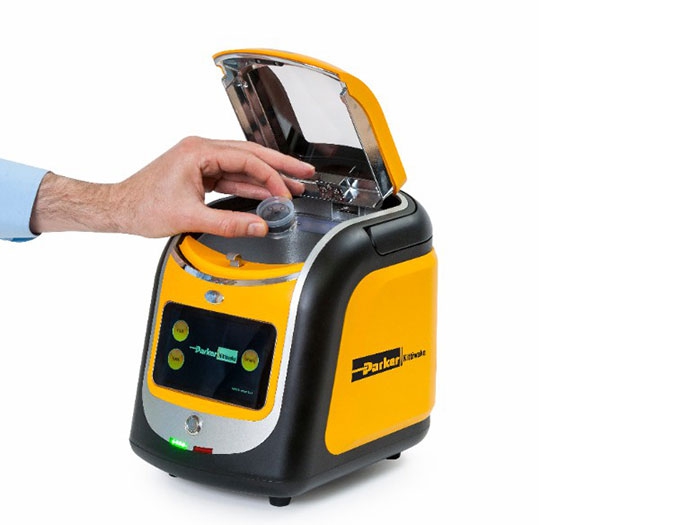
Portable testing device available for fuel sulfur content
Written by Nick Blenkey
X-Ray Fluorescence Analyzer (XRF),
APRIL 16, 2018 — Littlehampton, U.K., based Parker Kittiwake has just launched the X-Ray Fluorescence Analyzer (XRF), a portable testing device that, among other parameters, measures the sulfur content in fuel.
The XRF provides an accurate indication of sulfur content through the analysis of a small fuel sample in less than three minutes. This gives both shipowners and Port State Control (PSC) the ability to conduct laboratory-standard testing onsite, before non-compliant fuel is bunkered and before a vessel carrying non-compliant fuel leaves port.
Traditional methods for confirming compliance with sulfur limits rely on paperwork requirements such as the Bunker Delivery Note (BDN). This not only significantly increases the risk of non-compliance and subsequent penalties for shipowners, but also heightens the environmental impact of burning fuel with a higher sulfur content. In addition, the delay incurred by laboratory analysis creates the risk that the vessel may have left port with non-compliant fuel onboard, or may require non-compliant fuel to be de-bunkered and compliant fuel re-bunkered, incurring significant delays and additional cost. The XRF Analyser provides a spot-check analysis of the sulfur content in fuel on site, allowing PSC to ascertain compliance almost instantly, and affording shipowners the opportunity to avoid fines, plus the time, expense and operational impact of bunkering non-compliant fuel.
Larry Rumbol, Parker Kittiwake’s Marine Condition Monitoring Manager, said: “Given the lack of environmental policing on the high seas, enforcement of the 2020 global sulfur cap is a daunting challenge for the industry. Efforts to develop robust enforcement solutions tend to focus on paperwork checks at ports, but this must be reinforced by accurate, reliable testing data.
“Shipowners and operators are fighting an uphill battle to ensure they can effectively prove compliance. And Port State Control needs a way to ascertain compliance quickly and onsite, allowing them to take timely and appropriate action. With significant confusion over the stipulations in the way sulfur measurements are made – for example it is possible for fuel to pass ISO 4259 commercial tests but fail against MARPOL standards – it is clear that both parties require easy access to the data they need to accurately check and prove compliance.”
The XRF Analyzer is factory calibrated according to the ISO 8754 standard, and is capable of conducting field measurements that correlate strongly with laboratory measurements. Fuel can be easily sampled at any stage of the bunkering process, and test results can be stored electronically, allowing operators to manage compliance audits more efficiently.
In addition to sulfur testing, the XRF Analyser can be used to measure a range of wear metals in lubricating oil, allowing operators to quickly identify potential damage in cylinder liners, bearings, piston rings, gears, stern tubes and hydraulic systems.
Integrated into a small, lightweight housing, the XRF is easily portable for “plug-and-play” operation. Test results are displayed as a percentage on an LCD screen, avoiding ambiguity and mitigating the risk of human error through operators needing to interpret the test data.





Leave a Reply
You must be logged in to post a comment.